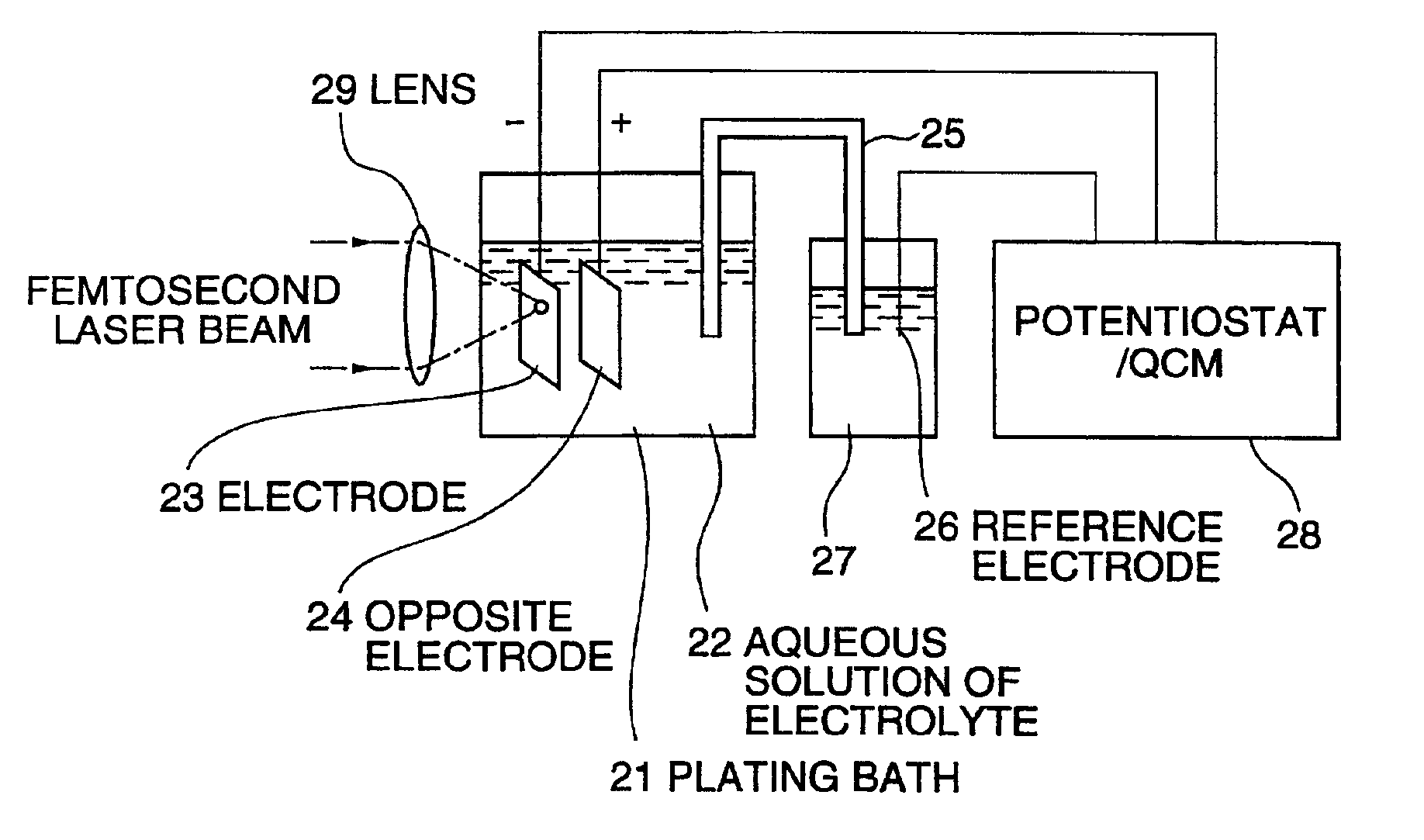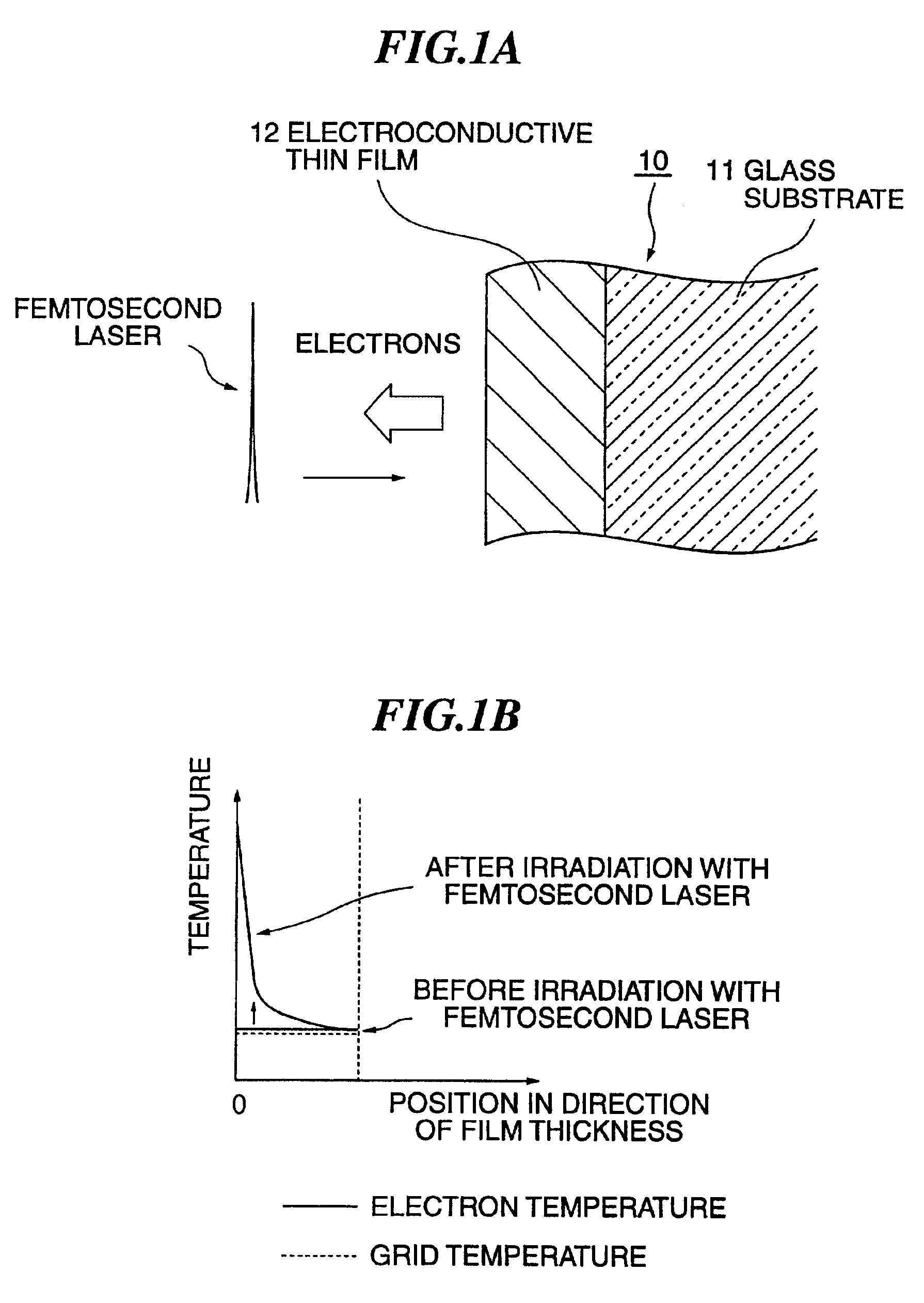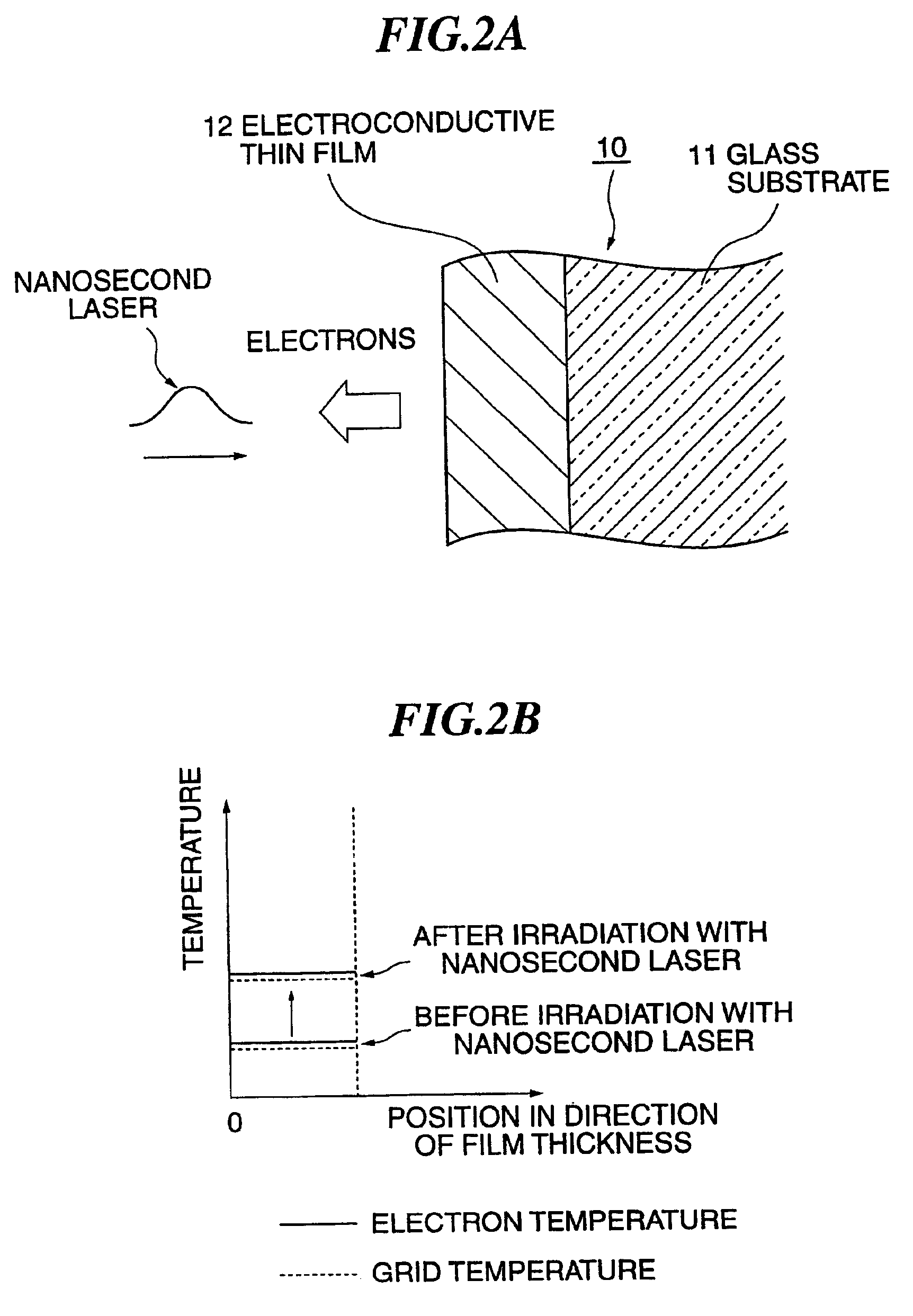Method for electrodeposited film formation, method for electrode formation, and apparatus for electrodeposited film formation
a technology of electrodeposited film and electrode, applied in the direction of electrolysis components, liquid/solution decomposition chemical coatings, coatings, etc., can solve the problems of thermal diffusion giving rise to overhangs on the edges of plating, non-electrolytic plating,
- Summary
- Abstract
- Description
- Claims
- Application Information
AI Technical Summary
Benefits of technology
Problems solved by technology
Method used
Image
Examples
embodiment 1
(Embodiment 1)
[0066]FIG. 4 and FIG. 5 show variations in electric charge generated by the fs laser, the cw laser and the ns laser relative to the laser beam intensity. FIG. 4 illustrates a case in which an aqueous solution of Pt (H2PtCl6; 1 g / (CH3COO)2Pb; 10 mg / water 30cc) was used, and FIG. 5, a case in which an aqueous solution of Zn (ZnCl2; 20 g / water 80cc) was used, both as the electrolyte solution 22.
[0067]The bias voltage between the electrode 23 and the opposite electrode 24 was −300 mV for the aqueous solution of Pt and −1.1 V for the aqueous solution of Zn. The electrode 23 was one of Au, and the opposite electrode 24, one of platinum black.
[0068]It is seen from these FIG. 4 and FIG. 5 that, whichever the electrolyte solution was, the electric charge generated under irradiation with the fs laser was four to ten times as much as that generated under irradiation with the cw laser or the ns laser. This reveals that electrons were more efficiently taken out when under irradiati...
embodiment 2
(Embodiment 2)
[0069]FIG. 6 shows variations in electrode weight when under irradiation with the fs laser (fs pulse in FIG. 6) and under irradiation with the ns laser (ns pulse in FIG. 6) In this case the irradiation intensity of the fs laser was 2.8 W / cm2, and that of the ns laser was 12.7 W / cm2. The electrolyte solution used in this case was H2PtCl6; 1 g / (CH3COO)2Pb; 10 mg / water 30 cc; the bias voltage was −300 mV, the electrode 23 was one of Au, and the opposite electrode 24 was one of platinum black. Variations in resonance frequency Δf in the negative direction matched increases in weight.
[0070]It is seen from this FIG. 6 that, while the electrode weight increased, i.e. plating was formed, when under irradiation with the fs laser, no plating was formed when under irradiation with the ns laser in spite of its more than four times as great luminous intensity than that of the fs laser. By direct visual observation, too, spotty formation of plating was witnessed when under irradiati...
embodiment 3
(Embodiment 3)
[0072]In addition to the foregoing, the following study was carried out to finally confirm that the phenomenon resulting from irradiation with the femtosecond laser in this mode of implementing the invention derives from hot electrons.
[0073]In plating formation by a thermo-electromotive force, the laser beam is absorbed by the substrate and generates an electromotive force. For this reason, as illustrated in FIG. 7, where the substrate 31 is made of a transparent material such as glass, plating is similarly formed irrespective of whether the laser beam comes incident on the front side of the thin-film electrode 32 formed by vapor deposition or otherwise as indicated by the arrow FL in the figure (hereinafter referred to as front side incidence) or it comes incident on the backside through the transparent substrate 31 as indicated by the arrow BK (hereinafter called the backside incidence). As a matter of fact, Reference 2 cited above gives a conclusion attributing the ...
PUM
| Property | Measurement | Unit |
|---|---|---|
| Percent by mass | aaaaa | aaaaa |
| Weight | aaaaa | aaaaa |
| Electric potential / voltage | aaaaa | aaaaa |
Abstract
Description
Claims
Application Information
 Login to View More
Login to View More - R&D
- Intellectual Property
- Life Sciences
- Materials
- Tech Scout
- Unparalleled Data Quality
- Higher Quality Content
- 60% Fewer Hallucinations
Browse by: Latest US Patents, China's latest patents, Technical Efficacy Thesaurus, Application Domain, Technology Topic, Popular Technical Reports.
© 2025 PatSnap. All rights reserved.Legal|Privacy policy|Modern Slavery Act Transparency Statement|Sitemap|About US| Contact US: help@patsnap.com



